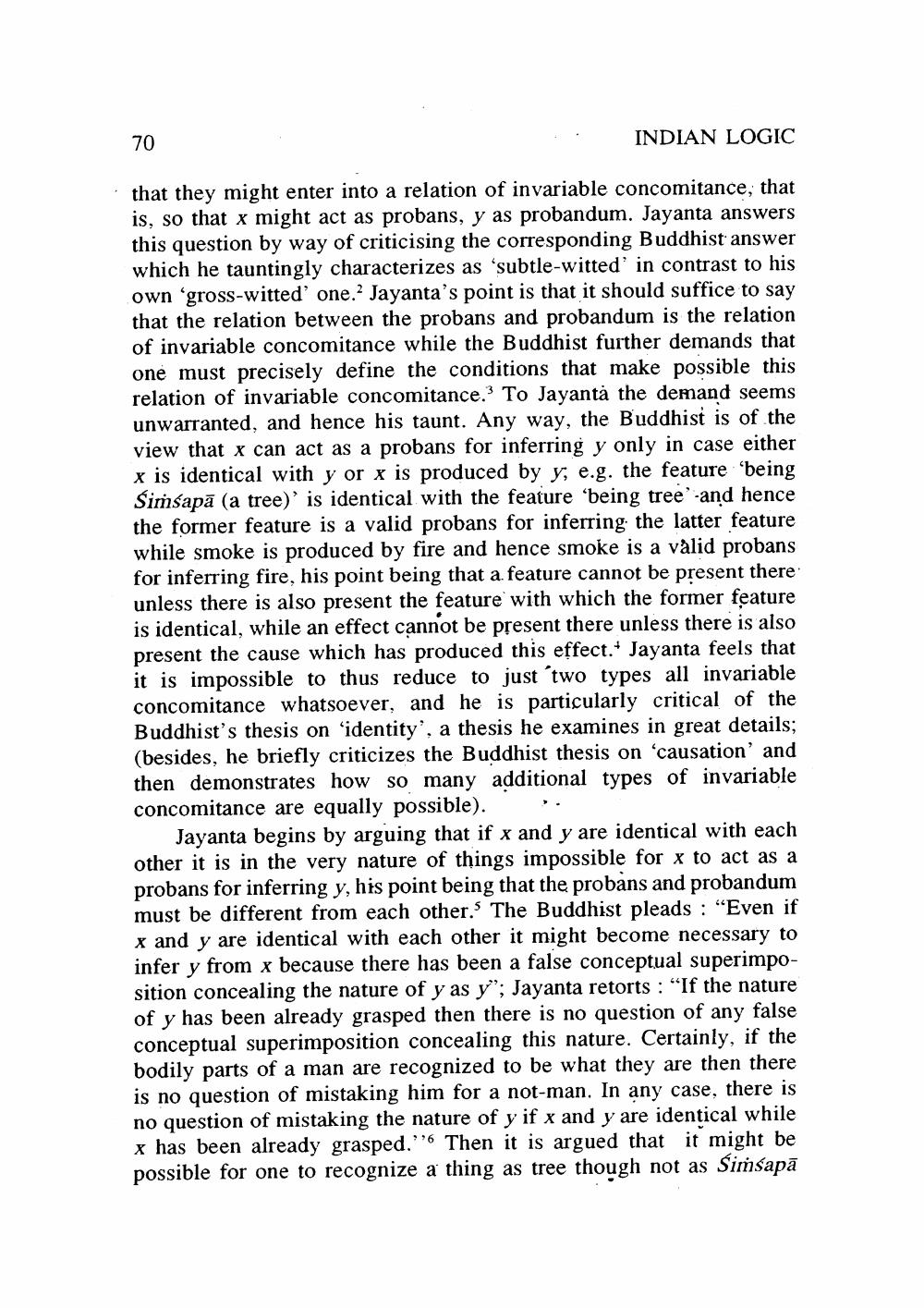________________
70
INDIAN LOGIC
that they might enter into a relation of invariable concomitance, that is, so that x might act as probans, y as probandum. Jayanta answers this question by way of criticising the corresponding Buddhist answer which he tauntingly characterizes as 'subtle-witted in contrast to his own 'gross-witted' one.Jayanta's point is that it should suffice to say that the relation between the probans and probandum is the relation of invariable concomitance while the Buddhist further demands that one must precisely define the conditions that make possible this relation of invariable concomitance.? To Jayant, the demand seems unwarranted, and hence his taunt. Any way, the Buddhist is of the view that x can act as a probans for inferring y only in case either x is identical with y or x is produced by y, e.g. the feature being Simšapā (a tree)' is identical with the feature being tree and hence the former feature is a valid probans for inferring the latter feature while smoke is produced by fire and hence smoke is a valid probans for inferring fire, his point being that a feature cannot be present there unless there is also present the feature with which the former feature is identical, while an effect cannot be present there unless there is also present the cause which has produced this effect. Jayanta feels that it is impossible to thus reduce to just 'two types all invariable concomitance whatsoever, and he is particularly critical of the Buddhist's thesis on 'identity, a thesis he examines in great details; (besides, he briefly criticizes the Buddhist thesis on 'causation and then demonstrates how so many additional types of invariable concomitance are equally possible). .
Jayanta begins by arguing that if x and y are identical with each other it is in the very nature of things impossible for x to act as a probans for inferring y, his point being that the probans and probandum must be different from each other. The Buddhist pleads : "Even if x and y are identical with each other it might become necessary to infer y from x because there has been a false conceptual superimposition concealing the nature of y as yo'; Jayanta retorts: “If the nature of y has been already grasped then there is no question of any false conceptual superimposition concealing this nature. Certainly, if the bodily parts of a man are recognized to be what they are then there is no question of mistaking him for a not-man. In any case, there is no question of mistaking the nature of y if x and y are identical while x has been already grasped.''6 Then it is argued that it might be possible for one to recognize a thing as tree though not as Simšapā




